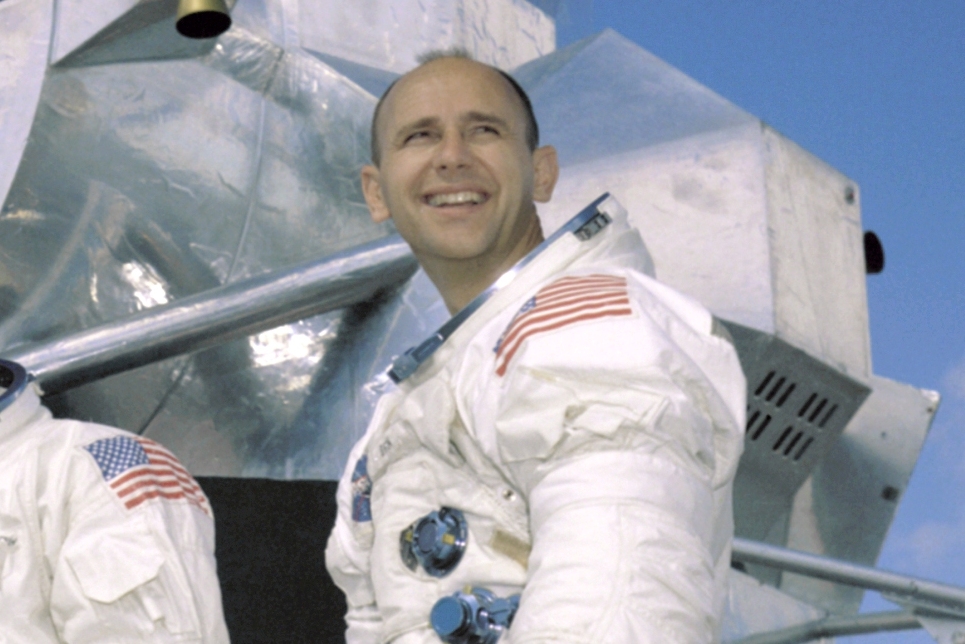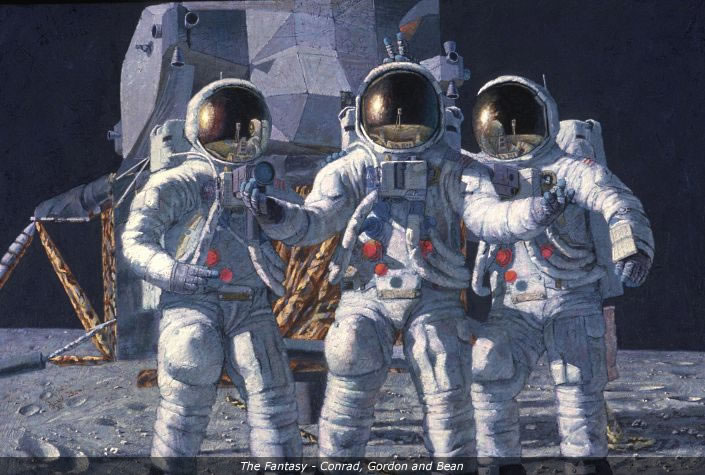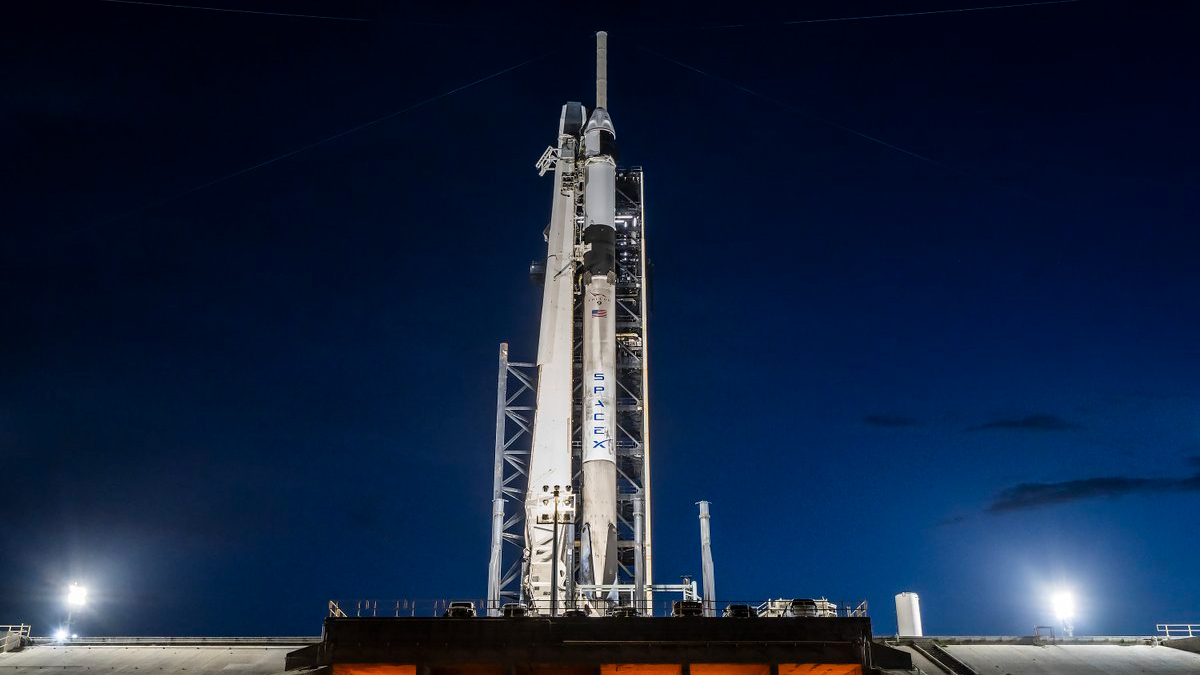Alan Bean: From Astronaut to Artist

Editor's note: Alan Bean, Jr., the Apollo 12 moonwalker who also flew to Skylab and later drew inspiration from his spaceflights in his art, died May 26, 2018 after an illness. He was 86.
Astronaut Alan Bean, Apollo Moonwalker-Turned-Artist, Dies at 86
Astronaut Alan Bean Remembered: Photos of a Moonwalker-Turned-Artist
Apollo 12 in Pictures: Photos from NASA's Pinpoint Moon Landing Mission
Alan Bean flew in space twice. His first spaceflight was an exciting one: landing on the moon on Apollo 12. Later, Bean commanded the second crew to head to the Skylab space station.
After he retired, Bean struck a path independent of many of his fellow astronauts, who resigned for private industry or politics. Instead, Bean started painting. He chronicled the experiences he had on the moon, as well as that of other astronauts, and as his style evolved began painting more fantastical images.
Early career and Apollo 12
Bean, who received an aeronautical engineering degree from the University of Texas, was commissioned into the Navy when he graduated in 1955. He first worked with a jet attack squadron in Florida before joining the Navy Test Pilot School.
"I was more of a person that liked flying and operating high-performance machinery, and I liked that, the skill it took, the intelligence it took to do that," Bean said in a 1998 oral interview with NASA. "It wasn't as great as brain surgery, but it was more than some other things, and so it seemed to fit what I was capable of doing."
NASA tapped Bean to be an astronaut in October 1963, right when the agency was starting the Gemini program. Bean then sat for years without a flight assignment.
In the 1998 interview, Bean said he didn't really fit in with some of the NASA culture during his first few years at the agency. He placed the fault squarely on himself, saying that he had often said he could do things better than some of his superiors. That likely ruffled some feathers, he acknowledged.
Although he served as a backup astronaut for the Gemini 10 and Apollo 9 missions, Bean was reassigned to the Apollo Applications Program to help determine the next steps after Apollo, rather than put in line for a flight. That changed after C.C. Williams, an astronaut set for flight assignments, was killed in a plane crash, Bean told NASA.
"Pete [Conrad], who knew me from test pilot school [chose me] although I hadn't done anything during the period of NASA where he could say, 'He is really good. He just is undiscovered.' I wasn't the undiscovered talent. It was never that. It was always not being able to show it somehow. So he, for some reason, still felt that I could be a good lunar module pilot."
A surprised, but delighted, Bean joined the Apollo 12 crew and flew to the moon in 1969. While Richard Gordon orbited the moon in the command module, Bean and Pete Conrad spent two days on the moon. They gathered up rocks from the Ocean of Storms and clipped a sample off the nearby, unmanned Surveyor spacecraft that had been sitting on the surface for years.

Painting a 'midlife crisis'?
Bean went on to command the second mission to the Skylab space station, where his crew blasted through its assigned tasks much quicker than the allotted two months they had to do them.
In 1981, Bean decided to resign from NASA to pursue full-time painting. It was a departure from his engineering and spaceflight days, but Bean felt that he could show the experience of living elsewhere because he had actually traveled to the moon.
"About half the astronauts thought it was a midlife crisis or something. The other half, the ones that were more right brain, thought it was a pretty good idea," Bean recalled in a 2010 interview with NASA.
On top of his images of astronauts and spacecraft, Bean sprinkles his paintings with moon dust and stamps them with an Apollo boot model. He currently commissions paintings for at least $45,000 each.
In 2009, Bean exhibited his paintings at the Smithsonian National Air and Space Museum in Washington, D.C., to coincide with the 40th anniversary of Apollo 11's landing. Many of the once-skeptical astronauts showed up to see his work, Bean recalled.
Bean added in the interview that he hoped his work would still be remembered after his death.
"I believe that 100, 200, 300 years from now all these paintings will be around, because they’re the first paintings of humans doing things off this Earth," Bean said. "When humans go to Mars they’re going to do the very same things, because this is what humans do."
— Elizabeth Howell, SPACE.com Contributor
Join our Space Forums to keep talking space on the latest missions, night sky and more! And if you have a news tip, correction or comment, let us know at: community@space.com.
Get the Space.com Newsletter
Breaking space news, the latest updates on rocket launches, skywatching events and more!

Elizabeth Howell (she/her), Ph.D., was a staff writer in the spaceflight channel between 2022 and 2024 specializing in Canadian space news. She was contributing writer for Space.com for 10 years from 2012 to 2024. Elizabeth's reporting includes multiple exclusives with the White House, leading world coverage about a lost-and-found space tomato on the International Space Station, witnessing five human spaceflight launches on two continents, flying parabolic, working inside a spacesuit, and participating in a simulated Mars mission. Her latest book, "Why Am I Taller?" (ECW Press, 2022) is co-written with astronaut Dave Williams.
